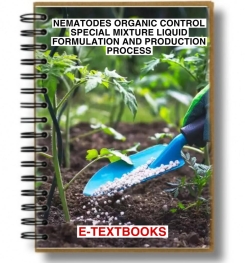Soil-inhabiting nematodes can also be classified according to their feeding habits. This classification is particularly useful to ecologists in understanding the positions of nematodes in soil food webs. Several important feeding groups of nematodes commonly occur in most soils. In addition, algivores (feed on algae) and various stages of insect and animal parasites occasionally are found in soil. The nematode feeding groups are called trophic groups by some authors.
Herbivores. These are the plant parasites, which are relatively well known. This group includes many members of the order Tylenchida, as well as a few genera in the orders Aphelenchida and Dorylaimida. The mouthpart is a needlelike stylet which is used to puncture cells during feeding. Ectoparasites remain in the soil and feed at the root surface. Endoparasites enter roots and can live and feed within the root.
Figure 2. Diagram of head regions of a herbivore (left) and nematode bacterivore (right). In the herbivore, the mouthpart is modified into a stylet for puncturing plant cells. In the bacterivore, the mouth or stoma is a hollow tube.
Bacterivores. Many kinds of free-living nematodes feed only on bacteria, which are always extremely abundant in soil. In these nematodes, the "mouth", or stoma, is a hollow tube for ingestion of bacteria. This group includes many members of the order Rhabditida as well as several other orders which are encountered less often. These nematodes are beneficial in the decomposition of organic matter.
Fungivores. This group of nematodes feeds on fungi and uses a stylet to puncture fungal hyphae. Many members of the order Aphelenchida are in this group. Like the bacterivores, fungivores are very important in decomposition.
Predators. These nematodes feed on other soil nematodes and on other animals of comparable size. They feed indiscriminately on both plant parasitic and free-living nematodes. One order of nematodes, the Mononchida, is exclusively predacious, although a few predators are also found in the Dorylaimida and some other orders. Compared to the other groups of nematodes, predators are not common, but some of them can be found in most soils.
Omnivores. The food habits of most nematodes in soil are relatively specific. For example, bacterivores feed only on bacteria and never on plant roots, and the opposite is true for plant parasites. A few kinds of nematodes may feed on more than one type of food material, and therefore are considered omnivores. For example, some nematodes may ingest fungal spores as well as bacteria. Some members of the order Dorylaimida may feed on fungi, algae, and other animals.
Unknown. Since free-living nematodes have not been studied very much, the food habits of some of them are unknown. The microscopic size of these animals presents additional difficulties. For example, it can be very difficult to distinguish whether a nematode is feeding on dead cells from a plant root or on fungi growing on the cell surface. Sometimes a nematode showing this feeding behavior may be classified simply as a root or plant associate.
NEMATODES AND TREATMENTS
It is difficult to treat nematodes in soil.
But it is not impossible.
For preventing plant roots from nematodes, controlling and getting rid nematodes. You can prepare own special organic liquid mixture for killing nematodes yourself, both economically and so effective.
preparation of this special organic liquid mixture, You need some ingredients that you can find your country easily, formulation and production process. You need no help and no technıcal support to make this mixture. simple mixing is sufficient.
Below textbook has a formulation and manufacturing process of special organic liquid mixture and methods of application to treat nematodes. You can produce special organic liquid mixture for getting rid nematodes easily and apply to soil safety.
RELATED TAGS : What is nematode, how to control nematodes, damages nematodes, types of nematodes, struggle with nematodes, fruits, flower,roots, plants,greenhouse,management of nematodes, biological control nematodes, chemical control nematodes, organic control for nematodes on plant roots, meaning of nematodes, nematodes on banana plant roots, pepper roots nematodes, tomato palnt roots and nematodes, treating plants with nematodes,how to control on plant roots. how to treat nematodes of tomato plant roots,how to identify nematodes,description of nematode,introduction of nematode,characteristic of nematodes,Nematodes,nematodes in general
SOLVERCHEM PUBLICATIONS
|
|
|
|
|
|
|
|
|


